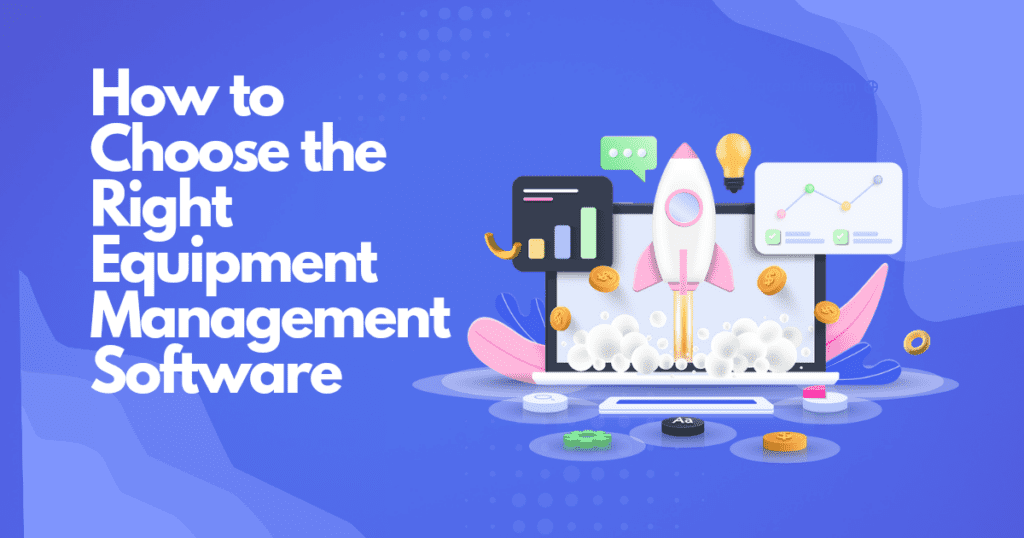Effective equipment management is critical for businesses that rely on machinery and other assets to operate. Equipment management software can help businesses manage their equipment inventory, track maintenance and repairs, optimize utilization, and improve overall productivity. However, with so many options available, it can be challenging to choose the right equipment management software for your business.
We will provide a comprehensive guide to help you choose the right equipment management software for your business. We will cover everything from assessing your business needs and identifying features to consider to evaluating top software options and implementing the software successfully.

Whether you’re a small business owner or a large enterprise, this article will provide valuable insights and recommendations to help you make an informed decision and maximize the benefits of equipment management software.
Key Takeaways
- Equipment management software can help businesses manage their equipment inventory, track maintenance and repairs, optimize utilization, and improve overall productivity.
- Assessing business needs is crucial before selecting equipment management software. It involves identifying pain points, goals, objectives, and the scope of equipment management needs.
- Essential features to look for in equipment management software are tracking and monitoring capabilities, maintenance and repair management, inventory and asset management, reporting and analytics tools, and integration with other business systems.
- Factors to consider when choosing equipment management software are cost and budget, ease of use and user experience, customization and scalability, customer support and training, and security and data protection.
- Some of the top equipment management software options are Ezelogs, Fiix, UpKeep, Asset Panda, EZOfficeInventory, and Hippo CMMS. They offer various features and pricing, and businesses should choose the one that suits their needs and budget.
Use the software to manage the whole equipment management process
Assessing Your Business Needs
Before you start looking for equipment management software, it’s important to assess your business needs to determine what you need the software to do. Here are some key steps to take:
- Determine the scope of your equipment management needs: Consider the types and number of equipment you have, as well as how they are currently managed. Do you need to track maintenance and repair schedules? Do you need to manage inventory and assets? Do you need to optimize utilization?
- Identify your pain points and challenges: What are the areas where your current equipment management process falls short? Are you experiencing breakdowns or downtime due to a lack of maintenance? Are you struggling to keep track of inventory and assets? Do you have difficulty accessing information or generating reports?
- Define your goals and objectives: What are you hoping to achieve with equipment management software? Are you looking to increase efficiency, reduce costs, or improve safety? Do you need to comply with regulatory requirements? Are you looking to streamline your equipment management process?
Assessing your business needs makes it easier to choose the right equipment management software.
Features to Look for in Equipment Management Software
When choosing equipment management software, there are several features and capabilities you should look for. Here are some of the most important features to consider:

- Tracking and monitoring capabilities: The software should allow you to track equipment usage, location, and status in real time. This can help you optimize utilization and prevent breakdowns.
- Maintenance and repair management: The software should have tools to help you schedule and track maintenance and repairs, including reminders for when tasks are due.
- Inventory and asset management: The software should allow you to track inventory levels and manage assets across multiple locations. This can help you avoid overstocking or understocking and improve asset utilization.
- Reporting and analytics tools: The software should have robust reporting and analytics capabilities, including customizable dashboards and real-time data insights. This can help you identify trends, spot issues, and make data-driven decisions.
- Integration with other business systems: The software should be able to integrate with other systems you use, such as accounting or procurement software. This can help you streamline processes and avoid data duplication.
Factors to Consider When Choosing Equipment Management Software
When choosing equipment management software, there are several factors to consider. Here are some of the most important factors to keep in mind:
Cost and budget: Consider the cost of the software, including any upfront fees and ongoing subscription or maintenance costs. Ensure that the software fits within your budget and offers good value for the price.
Ease of use and user experience: Look for intuitive and user-friendly software. Good user experience can help ensure that your team adopts the software and is used effectively.
Customization and scalability: Consider whether the software can be customized to your specific needs and grow with your business as your needs change.
Customer support and training: Look for a software provider that offers good customer support, including training and technical assistance. This can help ensure that your team can use the software effectively.
Security and data protection: Ensure the software offers robust security features and data protection measures to safeguard your equipment data.
Making the Final Decision
Although it can be difficult to make the right decision about equipment management software, there are steps you can follow to help you do so. These are the key points to remember:
- Compare software based on business requirements: features, pricing, scalability, customization, and customer support.
- Trial the software to evaluate user experience, ease of use, and functionality before final selection.
- Seek feedback and recommendations from other users to gain valuable insights into the software’s strengths and weaknesses in real-world situations.
- Review pricing structure, support, and service level agreements with the software provider before making a final decision.
These steps will help you make informed decisions when selecting equipment management software that meets your needs, budget, goals, and business objectives.
Implementing Equipment Management Software
Implementing equipment management software is an important step towards improving your business operations. Here are some best practices for implementing the software, training your staff and users, and ensuring a smooth transition and adoption:
- Plan the implementation process: Plan implementation with clear timelines and responsibilities, assigning a project manager to oversee and inform stakeholders.
- Test the software: Before rolling out the software to your entire organization, test it thoroughly to ensure it meets your business needs and is functioning correctly.
- Train your staff and users: Train staff thoroughly and offer ongoing support via in-person and online tutorials, user manuals, and encouraging questions.
- Encourage adoption: Encourage adoption by showcasing software benefits and regularly communicating features to staff and users.
- Monitor and evaluate: Monitor the use of the software and evaluate its effectiveness regularly. Identify areas where improvements can be made and take action to address any issues.
By following these best practices, you can ensure successful implementation of your equipment management software and maximize the benefits it offers to your business.
The Bottom Line
To summarize, choosing the right equipment management software can improve your business operations and efficiency. Consider your business needs and criteria, evaluate software options, and implement the software with a clear plan and comprehensive training. Encourage adoption by highlighting the benefits and advantages.
Top software options include Ezelogs, UpKeep, Asset Panda, and Fiix. Remember to seek feedback and recommendations, negotiate terms and agreements, and assess the software’s strengths and weaknesses


